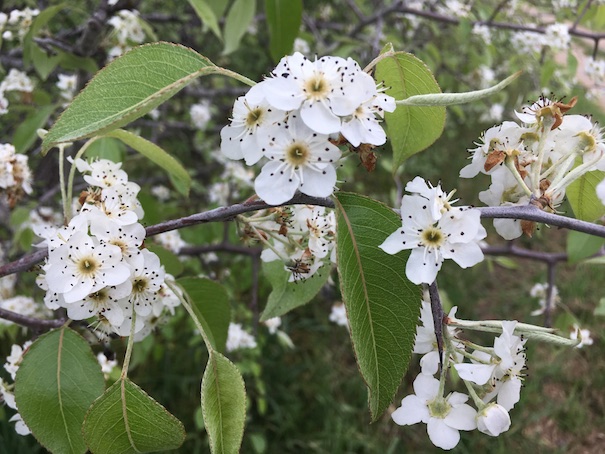Funny story: See that tree on the right? I have been mispronouncing its name for years! Farmer Tom told me what it was long ago, probably in the first year of Farm Discovery and I misheard him.
I called it “bachelafolia”. And not until today, when I sat down to right this post, did I realize that is not its name. How did I figure it out? Well, I googled it and it did not seem to exist. I tried every spelling for this pronunciation that I could think of and it turned up nothing. How often do you google something and get NOTHING? I am pretty sure that has not happened to me since the 90’s.
What, you demand to know, is it really called? Betulifolia. I wasn’t that far off. . . You can imagine, the noice of a tractor and some kids screeching, maybe some chickens clucking and birds singing, how I might hear what I heard?
So what is it? It is a hardy rootstock in the Rosaceae family. It does well in heavy clay soils, it dwarf’s its grafts, and it is compatible with many varieties in the Rosaceae family like apples and pears. We have a lot of it on the farm and we have grafted many a pear onto it, AND it is hearty as heck and sometimes it just keeps growing its own dang branches. The one in this pic has done just that.
You can tell it is related to pears and apples because the bark looks similar, the flowers look similar, it even flower at the same time, but the branches are much more bushy.
Sometimes with these hearty rootstocks to just have to start over, cut it all the way back and re-graft those tender scions that will eventually give you some delicious fruit.
So cheers to Bet-u-li-folia for making less hearty, fruit baring Rosaceae’s easier to pick in a dwarf form and tolerant of our heavy clay soils!!! We look forward to the delicious juice of a Warren Pear running down our chin in the fall and watching them grow at camp this summer.



